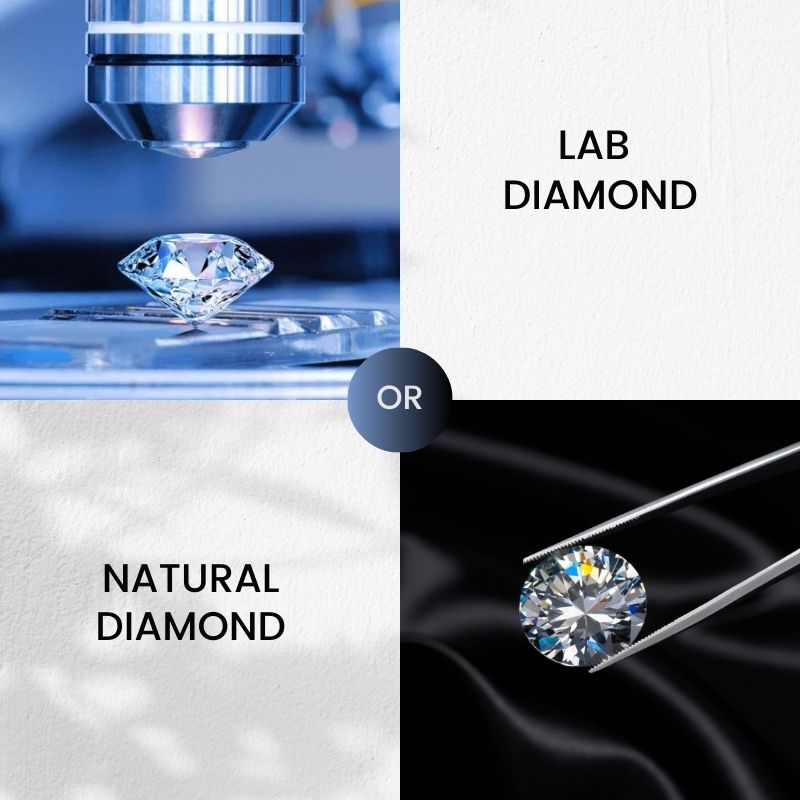
Diamonds have long been symbols of luxury and everlasting love, cherished for their beauty and rarity. However, not all diamonds are created equal. In today’s market, there is a significant distinction between land diamonds (often referred to as synthetic or lab-grown diamonds) and natural diamonds. Understanding the difference between these two types of diamonds is crucial for consumers, investors, and environmentalists alike. This comprehensive guide explores the origins, characteristics, economic value, and ethical considerations of land and natural diamonds.
The primary difference between land and natural diamonds lies in their origin. Natural diamonds are formed deep within the Earth’s mantle over billions of years, subjected to intense heat and pressure. Land diamonds, on the other hand, are created in a controlled laboratory environment within weeks or months. Despite their different origins, both types of diamonds share many similarities in terms of physical and chemical properties, making it challenging for even experts to distinguish between them without specialized equipment.

Natural diamonds are formed deep within the Earth’s mantle under high-pressure and high-temperature conditions over billions of years. These diamonds are brought to the surface through volcanic eruptions, encased in kimberlite pipes. The lengthy and rare formation process contributes significantly to their allure and value.
Lab-grown diamonds are created in controlled environments using methods that replicate the natural formation process. The High-Pressure High-Temperature (HPHT) method and Chemical Vapor Deposition (CVD) are the two primary techniques. These processes can produce gem-quality diamonds in a matter of weeks to months, providing a more consistent and less time-consuming alternative to natural formation.

Both lab and natural diamonds share identical physical properties. They rank 10 on the Mohs scale of hardness, exhibit high refractive indices, and have excellent thermal conductivity. These characteristics make both types of diamonds extremely durable and brilliant.
Both types of diamonds consist of pure carbon atoms arranged in a crystal lattice. Natural diamonds may contain trace elements like nitrogen or boron, affecting their color and clarity. Lab diamonds can be engineered to minimize these impurities, resulting in more consistently pure stones.
To the naked eye, high-quality natural and lab diamonds look the same. However, under a microscope, lab diamonds may show unique growth patterns and metallic inclusions that do not occur in natural diamonds, providing a subtle distinction.

Natural diamonds have a high market value due to their rarity and historical significance. Lab diamonds are gaining popularity for their ethical production methods and lower environmental impact, making them an attractive alternative for environmentally conscious consumers.
Natural diamonds typically command higher prices because of their rarity and the extensive mining and distribution processes. Lab diamonds are generally less expensive, providing a cost-effective option without compromising quality.
Natural diamond mining has been criticized for unethical labor practices and environmental damage. Efforts like the Kimberley Process aim to reduce these issues but are not foolproof. Lab diamonds offer a more ethical alternative, avoiding the labor exploitation and environmental impact associated with mining.
Mining for natural diamonds involves significant environmental disruption, including habitat destruction and pollution. Lab diamonds have a smaller environmental footprint as their production requires fewer natural resources and energy.
Choosing between lab and natural diamonds ultimately depends on personal values and preferences. Natural diamonds offer a sense of historical significance and rarity, while lab diamonds provide an ethical, environmentally friendly, and cost-effective alternative. Both types of diamonds hold their unique appeal, ensuring there is a perfect diamond for every buyer.